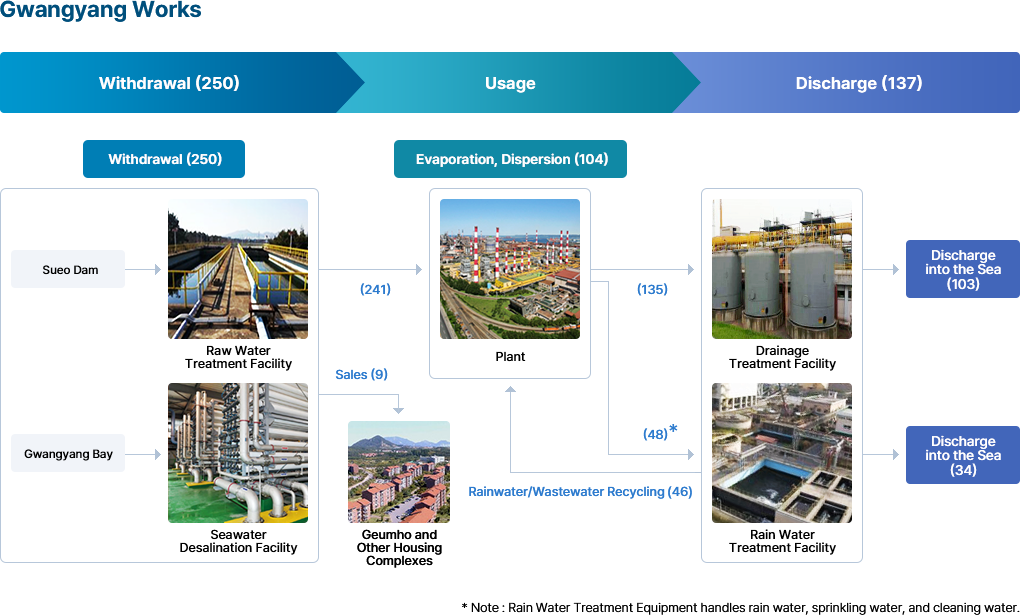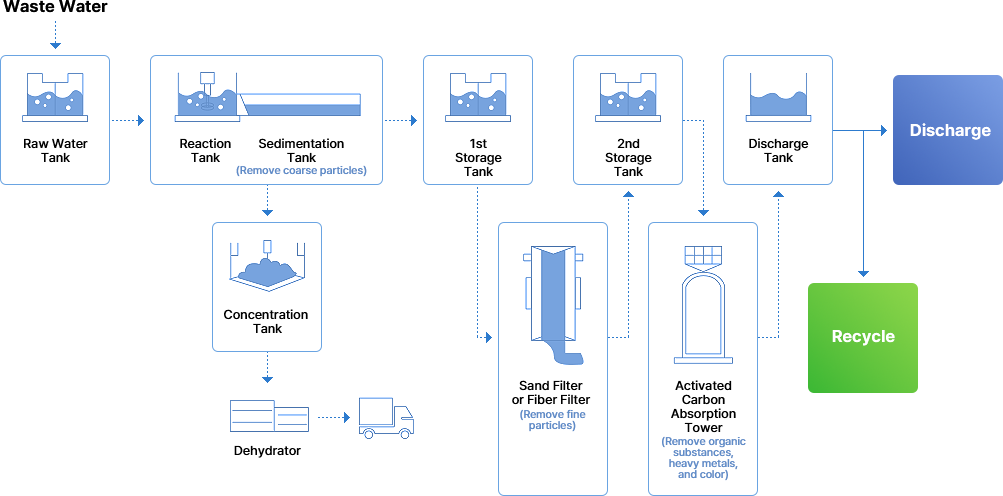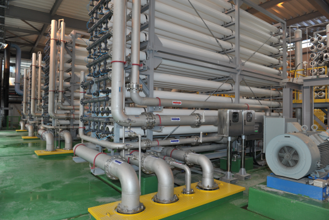Water Resources
Water Usage Process
Water Conservation
POSCO’s environmental policy commits to minimizing resource use—including water—and reducing environmental impact through effective management of wastewater.
According to the Water Resources Institute (WRI), Pohang Works is located in a Medium High Water Stress area(20–40%), while Gwangyang Works was designated as a High Water Stress area(40–80%) as of August 2023. In response, we are exploring the use of high-quality wastewater discharged from unit plant water treatment systems and conducting research on recycling final discharges—such as end-of-drainage water—through reverse osmosis(RO) treatment. The treated water is intended to be reused as industrial water replacing road and yard sprinkling, thereby reducing water withdrawal and increasing resilience against water stress.
To reduce reliance on surface water and groundwater, POSCO is securing alternative water sources. Since 2015, Pohang Works has utilized treated sewage reuse water, reducing the use of 80,000 tons of fresh water per day. Since 2014, Gwangyang Works has operated a seawater desalination facility, saving up to 30,000 tons of fresh water per day. We also strive to minimize steelwork wastewater generation and maximize water recycling by collecting and treating reusable sources such as cooling water, rainwater, and yard and road sprinkling water at stormwater treatment facilities. As a result, POSCO reused 19% of its water in 2024, contributing to local water conservation efforts and reducing community-level water shortage risks.
Non-recyclable wastewater is subjected to rigorous end-of-pipe treatment. After undergoing primary(physical and chemical) and secondary(biological) treatment to remove organic contaminants, the water is further processed in a final treatment stage to eliminate suspended solids(SS), total organic carbon (TOC), total nitrogen(T-N), and other pollutants. Discharge concentrations are controlled in accordance with internal standards that are more stringent than regulatory requirements.
Wastewater Treatment System
Seawater Desalination
POSCO produces industrial water by collecting warm drainage water from power plants and processing it through pretreatment and reverse osmosis. We collect seawater with temperatures ranging from 20–30°C, discharged as warm cooling water from power plant multiplexers, and pretreat it using methods such as Dissolved Air Flotation(DAF) and Ultrafiltration(UF) to remove particulate matter. The pretreated water is then subjected to reverse osmosis(SWRO + BWRO) with high-pressure pumps to remove ionic substances and generate clean water.
The seawater desalination facility at Gwangyang Works helps reduce freshwater withdrawal and improve energy efficiency. We process up to 30,000 tons of seawater per day for industrial use, replacing conventional sources such as dam water. By utilizing warm water discharge instead of raw seawater, we minimize energy consumption, and further enhance efficiency through an Energy Recovery Device(ERD) that recovers pressure energy from the high-pressure pumps.




